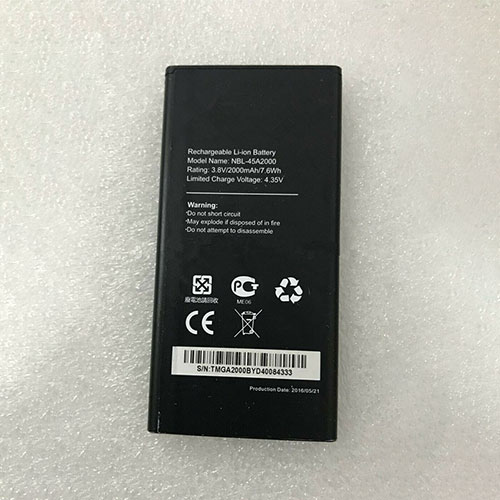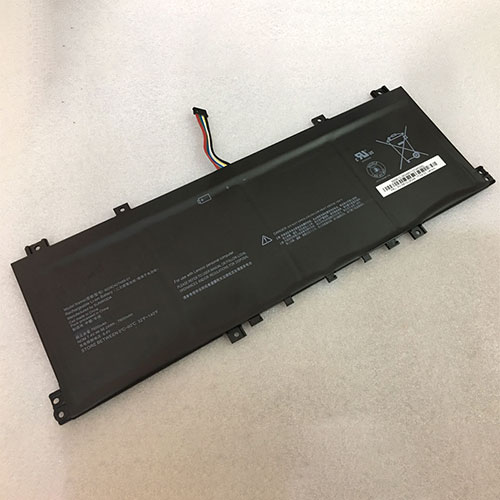With its display technology and powerful battery of an almost 600-mAh capacity, Mobvoi mainly wants to improve the weak battery life that is typical for WearOS – and it succeeds. The fact that the smartwatch uses “GPS” in its name, even though many wearables record routes at this point, is also justified: with GPS, Beidou, GLONASS, Galileo, and QZSS the TicWatch Pro 3 GPS is positioned very well.
Mobvoi TicWatch Pro 3 GPS
Processor
Qualcomm Snapdragon Wear 4100
Memory
1024 MB
Display
1.4 inch , 454 x 454 pixel 459 PPI, Full touch, AMOLED, glossy: yes
Storage
8 GB eMMC Flash, 8 GB
, 5.05 GB free
Weight
41.9 g ( = 1.48 oz / 0.09 pounds) ( = 0 oz / 0 pounds)
Price
299 Euro
Equipment and Case
For a long time Mobvoi held on to the older Snapdragon Wear 2100 from 2016 and even equipped the TicWatch Pro 2020 and the TicWatch C2+ with it in spring of 2020. With the TicWatch Pro 3 GPS, Mobvoi skips one SoC generation, becoming the first manufacturer to use the Snapdragon Wear 4100. This is a huge jump, since Qualcomm replaced the Cortex A7 cores of the two predecessors with Cortex A57 cores only now, and the LPDDR3 RAM building blocks of the Snapdragon 4100 have a clock speed of 750 MHz instead of the 400 MHz in the Snapdragon Wear 3100.
Performance Increase
There are no benchmarks specific for smartwatches, and the known browser benchmarks hardly run on the Wearables platform. But at least the Octane V2 Java Script benchmark will run. The result is 3580 points, which is not just significantly better than the Moto 360 with a Snapdragon Wear 3100 (1522 points). With the similar amount of working memory, the TicWatch also only needed half the time. In terms of the result as well as the time, the Samsung Galaxy Watch 3 with the in-house Exynos 9110 also fared worse with 2171 points.
Compared to the earlier mentioned TicWatch Pro 2020 and TicWatch C2+ smartwatches, Mobvoi has also expanded the storage, now offering 8 GB of ROM instead of 4 GB as before. However, after the setup only 4.4 GB of that are still available.
A microphone and NFC are standard for watches with WearOS, ensuring that Google Pay and the Google Assistant can be used. In addition they allow making phone calls using the connected smartphone without having to pick it up.
Dual Display
What is particular about the TicWatch Pro model series is surely its two displays. With Dual-Display 2.0, there is an additional FSTN LCD above a contrast-rich AMOLED, as you can see in the schematic below. The FSTN LCD uses less power and only refreshes the display once a second. When the TicWatch Pro 3 changes from the LCD to AMOLED, the LCD becomes transparent and the AMOLED shines through.
In other smartwatches, always-on means that instead of a black screen you see a reduced watch face when you don’t use the smartwatch. In the TicWatch Pro 3, there is no black screen. If you deactivate the selection “Always-On Display,” which is one of the standard settings in Google’s WearOS operating systems, the FSTN LCD continues to show the time and date and the number of steps taken, without using up much power for this. In addition, this display gives a technical or retro look that reminds us of the monochrome segment display of older watches.
The case is a visually appealing material mix of matte-black hardened nylon with glass fibers and shiny stainless steel. As its predecessor, it is also IP68 certified, but slimmer. The leather band from earlier models is replaced by Mobvoi with a silicone band in the leather look. This is a step back, and Mobvoi tries to hide this with orange-colored seams to give the illusion of a natural product.
The smartwatch is operated by the touchscreen and two buttons on the side. Pressing twice on the bottom button will open the app that was used last. However, in our test, the apps froze regularly and stopped responding, rendering the shortcut useless and forcing us to reopen the app using the app menu.
Software
As in all the watches with Google’s WearOS, setting up the smartwatch is done using the similarly named Google app. In the WearOS app, among other things you can decide which notifications should be sent from the smartphone to the watch and select the widgets that are displayed to the right of the watch face using horizontal gestures. Google has recently lifted the restriction of a maximum of five widgets. Of the total of 14 available widgets, 10 could be installed.
In addition, Mobvoi offers its own app in the Apple Store and in Google’s Play Store, which offers a few additional watch faces, some overviews of the collected health and fitness data, and a player for audio recordings of the TicWatch Pro 3 GPS:
TicRecorder captures a dictation with markings that the player of the Mobvoi app on the smartphone can directly jump to. An online service transcribes the texts into printable text upon demand. This worked well in our test, but only for English texts. The audio recordings are automatically synchronized by the watch. However, in our test the TicWatch regularly lost the connection to the smartphone, and reconnecting did not always succeed in the first try.
Health
In addition to the recorder and the Google Fit apps that are the standard on any WearOS watch, Mobvoi also packs the watch with nine apps for health and fitness, including one for noise recognition and breaks taken.
TicHealth is the health center that stores all the measurements, analyzes them, and turns them into charts, including a daily as well as a weekly summary.
To allow the smartwatch to record steps, heart rate, and blood oxygen saturation, it needs the corresponding permissions, which are deactivated by default. Only after giving the permissions, the watch can also provide the sleep protocol and the corresponding diagrams. You can revoke each permission separately in the TicHealth watch app under the Data Privacy item. This can even be done temporarily to prolong the battery life by limiting the measurements, for example.
Training – Extensive analyses, but no elevation profile
An app called Fitify is installed on the TicWatch Pro 3 GPS. It offers animated guidelines through 22 workouts with a different emphasis, such as Balance and Coordination, a 7-minute training, Tabata, Everything for the Butt, Shoulders and Upper Back, as well as warmup and cool down exercises.
For the regular recording of your training, you can either start Google Fit or the Fit Training Mobvoi app. You can find you information and screenshots of the Google Fit app in our review of the Moto 360. This review will mainly focus on the Mobvoi app.
While Google Fit offers almost 100 sport modes, TicTraining limits itself to 13, such as biking outside or on the track, pool swimming, rowing exercise, and the ellipsis trainer.
Thanks to GPS, you are independent of the smartphone when running or performing other workouts outdoors. In our test, it demonstrated that it was quickly ready to determine its location. If there are any problems, the TicWatch is able to optionally use the GPS of the smartphone, as long as you bring it along. While the TicWatch Pro 3 GPS has a barometer, it did not record an elevation profile during the time of our testing.
The top button pauses a workout. You can only stop it using the touchscreen by first swiping the training indicator off to the side and then pressing the appearing soft button for two seconds.
In contrast to the health statistics, the training protocol remains rudimentary on the watch. Only the smartphone can deliver some revealing analyses, such as the step length and frequency when running. However, the item “Goal” remains unclear in the nordic-walking protocol below (In the screenshot of the German app below, this is mistranslated as “Tor”). Ball games such as handball or soccer are not included in the training portfolio of the TicWatch. And neither is nordic walking, which is the reason why it was recorded as a walk.
Battery Life – A large battery ensures a long battery life
In our tests so far, no other smartwatch with Google’s WearOS has lasted as long as the TicWatch Pro 3 GPS. While 3 days are still not much, this is considerably longer than the typical WearOS maximum battery life of about 1.5 to 2 days. If you use the TicWatch less intensely or deactivate some functions such as the regular measurement of the heart rate, the battery life lasts longer, while workouts with GPS will shorten it.
The decision for the FSTN LCD instead of the AMOLED does not add days, but only a few hours up to about half a day, depending on your usage. For comparison: during average usage with an illumination duration of 10 s (default: 5 s) and always-on display, regular measurements of the heart rate and nightly wearing, the battery dropped to 70% in 24 hours with the power-saving display, and with the OLED in the always-on mode to 65%.
We credit the battery life, which is long for a WearOS smartwatch, mainly to the battery that has a capacity rated at 595 mAh. For comparison, the TicWatch Pro 2020 had 415 mAh, the TicWatch C2+ 400 mAh, the Moto 360 (2020) 355 mAh, and the Oppo Watch even only 300 mAh, which is barely half.
Considering this situation, it is not possible to clearly determine whether the new SoC also has a part in this. According to Qualcomm, it consumes about a quarter less power compared to its predecessor.
In Essential Mode with the FSTN LCD and without the smart functions, it runs up to 45 days according to the manufacturer. You can activate the Essential Mode any time and deactivate it later. It then goes back into the Smart Mode with a restart.
The charging process takes about 2 hours.
Verdict
The TicWatch Pro 3 GPS differentiates itself from the crowd of WearOS smartwatches with a longer battery life and an extensive software package. For example, while the audio recorder is no killer feature, it often became useful as a quick reminder during the time of our testing.
In the rest of the apps, we also like the structure of the watch software: For example, TicWorkout not only starts a new workout, but also, triggered by a gesture, leads to earlier recordings and some overview analyses, and with an additional gesture to the corresponding options.
3 days of battery life is not much – but 50% more than in most other WearOS smartwatches
While the performance increase of the new SoCs is measurable, it is less noticeable in everyday usage. Time consuming procedures such as the download of apps from the Play Store depend too much on other factors, so the TicWatch Pro 3 GPS can hardly complete them any faster than smartwatches with the Snapdragon WearOS 3100 or 2100 that can be navigated just as smoothly.
In terms of its expandability using the Play Store, the TicWatch Pro 3 GPS with its fast SoC and large storage of course offers good prerequisites for more powerful apps, but at 299 Euros (~$355) it also belongs to the upper price segment of WearOS watches.


